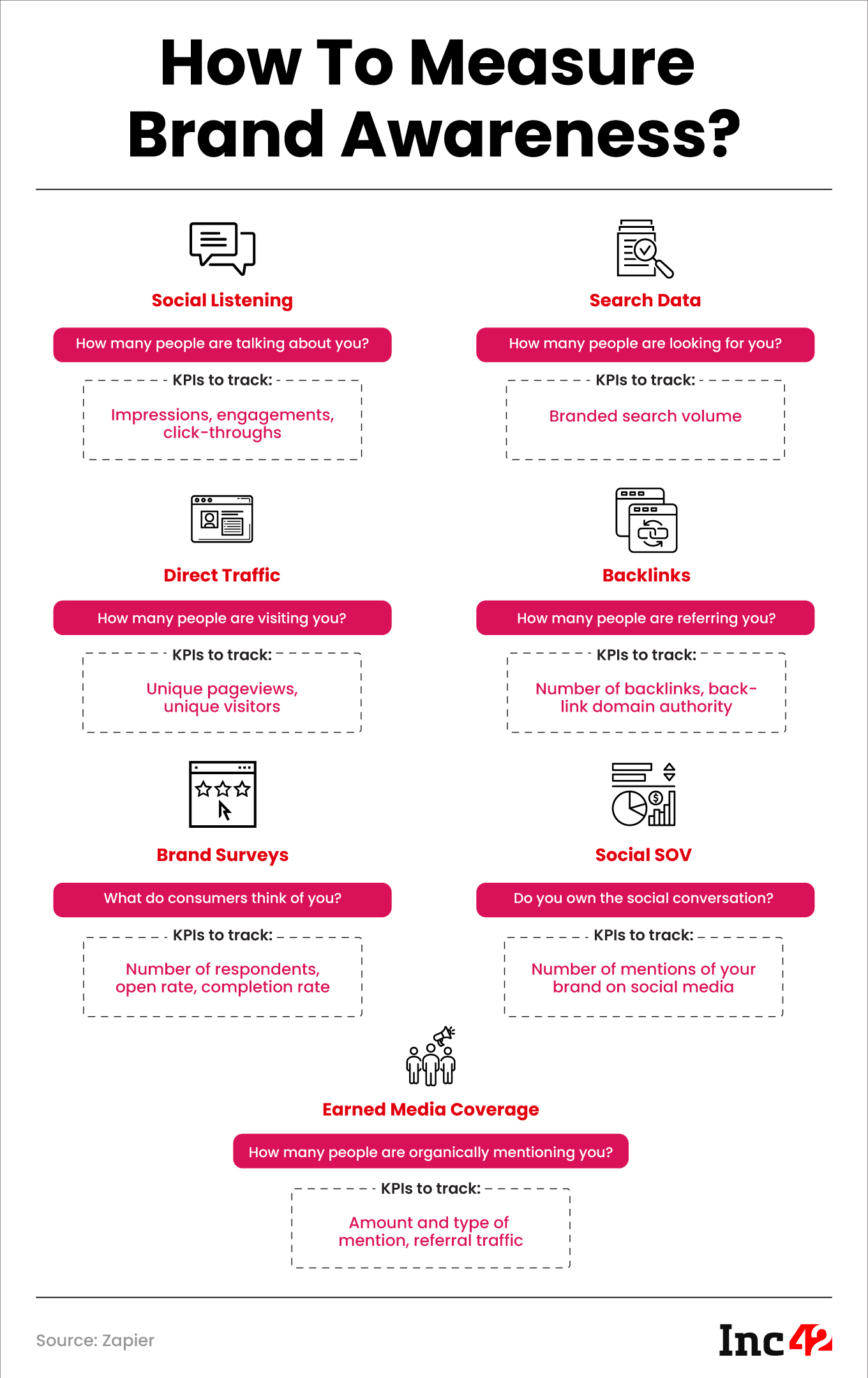What Is Brand Awareness?
Brand awareness means how customers perceive, recall and recognise a brand. It also measures the brand’s external perceptions, which plays a key role in building marketing strategies specific to business needs.
How To Create Brand Awareness?
In an era of fierce industry competition, every D2C brand must concentrate on its distinct attributes to cultivate brand awareness. Consider the following strategies:
- Craft Engaging Narratives: D2C brands should weave captivating and consistent stories about their identity, brand values and impact. These narratives forge an emotional connection with customers, broadening the brand’s reach.
- Drive Social Impact Campaigns: Aligning with its values, a brand can launch campaigns that contribute to societal well-being. This not only bolsters the company’s reputation but also draws in like-minded individuals who resonate with the cause.
- Leverage Multi-channel Promotion: To bolster brand awareness, capitalise on diverse promotional channels. Additionally, empower your employees to be enthusiastic brand advocates, extending the brand’s reach through their networks.
- Showcase Customer Success: Enhance credibility by incorporating testimonials showcasing positive customer experiences on your website or mobile app. These success stories serve to reinforce the brand’s reliability and trustworthiness.
- Utilise New Product Launches: Elevate brand awareness by introducing new products and furnishing valuable resources on your website/app. This underscores the brand’s expertise, adaptability and dedication to catering to evolving consumer behaviour.
- Precise Audience Research: Effective marketing starts with comprehensive audience research. Identify their pain points and then present your brand’s unique value proposition, positioning you ahead of competitors.
- Generate High-Quality Content: Establish a podcast and distribute LinkedIn and email newsletters to foster a loyal following. Podcasts also present opportunities for collaboration with industry leaders, amplifying audience outreach.
- Maintain Open Communication: Keep communication channels accessible to engage with followers. Encourage referrals to spur word-of-mouth growth, as referrals are instrumental in rapidly expanding brand awareness.
- Forge Partnerships: Collaborate with non-competitive companies targeting the same audience. By cross-promoting each other’s offerings, both entities can tap into a wider audience base.
Incorporating these strategies can significantly enhance your brand’s visibility and resonance in the competitive landscape.
How To Measure Brand Awareness?

What Are Brand Awareness Campaigns?
A brand awareness campaign is created by a company to increase its awareness and recognition among its target audience. Such a campaign aims to promote the company’s USP. It is especially useful for early stage startups and small businesses and helps old brands revive.
However, these campaigns have three key advantages for brands – total control over creating brand perception, building trust with the target audience and building customer loyalty.
How To Make A Brand Awareness Campaign Successful?
- Start with understanding who the target audience is by analysing the existing customer base and conducting market research.
- To maximise the impact of the campaign, brands can leverage the platforms that their existing customers use often.
- Plan realistically to set achievable goals for the short and long term.
- It is a good idea to collaborate with allied brands to create brand value, increase exposure and expand reach.
- Engage with users online by responding to customer interactions and regularly posting content.
- Keep working towards improving customer experience to leave a positive impact and brand recall.
- Constantly track the campaign’s results by using relevant metrics to measure success and make improvements based on real data.
- Collaborate with social media influencers whose values align with the brand’s values to expand reach.
What Role Does Customer Experience Play In Brand Awareness & Brand Recognition?
When brands work on improving customer experience (CX), it directly leads to increased brand awareness. Brands interact with customers on touchpoints like websites, email marketing, social media and more. The experience customers have while interacting with the brands on all these touchpoints defines the customer experience.
If a brand has invested judiciously in CX, it will create positive experiences for the customers who could share their experiences with others, contributing to brand recognition and awareness.
Therefore, customer experience becomes an important metric for assessing brand awareness. Positive customer experiences make the brand memorable, stand out from competitors and foster customer loyalty.
How Does Brand Awareness Help In Driving A Brand’s Sales?
Given the stiff competition that persists in the market, brand awareness becomes one of the crucial factors in driving sales for businesses. By increasing the brand’s visibility among the target audience, they can potentially convert the audience into customers.
Brand awareness also helps attract the right talent. Once a brand has established a positive reputation in the market, it becomes easier for it to find loyal customers. Investing in brand visibility is a valuable step for businesses seeking growth.
What Is Brand Awareness Pyramid?
It is based on marketer David Aaker’s theory to measure the levels of brand loyalty. These levels are as follows:
- Zero Awareness: This comes right at the bottom of the pyramid. At this level, the customer has little to no awareness of the brand.
- Brand Recognition: At the third level, brand recognition allows the target audience to identify business visually through logos, slogans and packaging.
- Brand Recall: At this level, brands start coming to an individual’s mind when in need of products and services of the respective category.
- Top-of-Mind Awareness: The top level of brand awareness is when the brand’s product comes as the first product in the consumer’s mind when a certain need arises. Creating a top-of-mind awareness is crucial for customer loyalty and involves becoming the most frequently used brand in the respective category.








